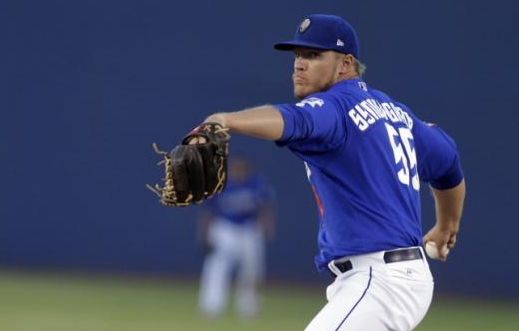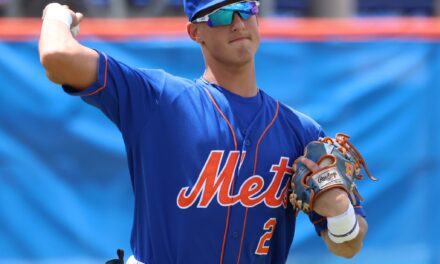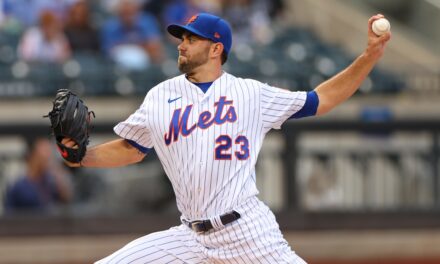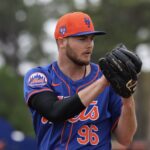
Baseball America released their Mets Top 10 Prospects today and they project a bright future for the Mets.
All seven of the Mets’ domestic affiliates finished at .500 or better in 2014, giving New York a cumulative .568 winning percentage that led all organizations. They point out that the system has finally begun to see some position players move up to the higher levels and closer to an MLB debut.
Here are the top ten:
1. Noah Syndergaard, RHP – Not only did the Mets neglect to call up Syndergaard in 2014, as they had Zack Wheeler in 2013 and Matt Harvey in 2012, they bypassed him entirely to call up Las Vegas rotation-mates Jacob deGrom and Rafael Montero during the first half of the season. That won’t be the case in 2015, not after Syndergaard joined the 40-man roster in November. He threw a career-high 133 innings in 2014 and could be good for 150 or more in New York this year. Syndergaard profiles as a No. 2 starter with two plus pitches, an average third and at least average control.
2. Steven Matz, LHP – Matz throws with the kind of velocity (93-95 mph), looseness and direction to the plate that makes scouts drool. He can rear back for 98 mph when he needs it, earning him double-plus grades for his fastball. Matz throws a plus changeup in the mid-80s that features plus sinking action and impressive separation from his fastball. Matz profiles as high as a No. 2 starter in a rotation because he throws two plus pitches, an average third and has average control. He could begin 2015 at Triple-A Las Vegas and supply lefty balance to the Mets rotation in the second half.
3. Brandon Nimmo, OF – Nimmo has added muscle since signing, steadily increasing his power output with experience. While he is more of a gap hitter now, scouts project him to develop above-average power because of his advanced hitting approach and strong lefthanded swing. He will hit for average with his all-fields approach, frequency of hard contact and willingness to attack first-pitch fastballs.
4. Dilson Herrera, 2B – Short and compact, Herrera incorporates his hands and lower half adeptly in his swing, projecting to hit for a high average with frequent hard contact, a middle-field approach and bat speed to spare. He ranked fourth in the minors with 169 hits in 2014, thanks to a quick, repeatable swing. The Mets love Herrera’s makeup and work ethic, which factored in their decision to call him up in August, though he probably will begin 2015 at Triple-A Las Vegas while he waits for regular at-bats in New York.
5. Kevin Plawecki, C – Plawecki has hit .307/.379/.453 in full-season ball the past two seasons, with strikeouts just 11 percent of the time. That sort of bat control speaks to his strong hands, all-fields approach and ability to handle varied pitch types, which will allow him to hit for average in the big leagues. While he’s more of a gap hitter, he can pull the ball for power and will reach double digits for home runs. While he doesn’t offer the power-and-arm strength profile that teams favor from catchers today, Plawecki has feel to hit, on-base ability, moderate power and the defensive chops to play every day. Mets rookie Travis d’Arnaud hit well in 2014, but his defensive struggles could one day create an opportunity for Plawecki to start.
6. Amed Rosario, SS
7. Michael Conforto, OF
8. Rafael Montero, RHP
9. Marcos Molina, RHP
10. Gavin Cecchini, SS
BA says the signing of Michael Cuddyer indicates that Sandy Alderson believes the rebuilding phase is over and that it’s time for the team’s streak of six losing seasons to end.
“Pitching and defense have brought the Mets to the cusp of contention. While seven NL clubs allowed fewer runs than New York in 2014, Mets pitchers allowed 3.81 runs per game, the franchise’s lowest rate since 1990. They didn’t rely on soft stuff and chicanery either, not with a strikeout rate of 8.0 per nine innings that ranked third in the league.”















